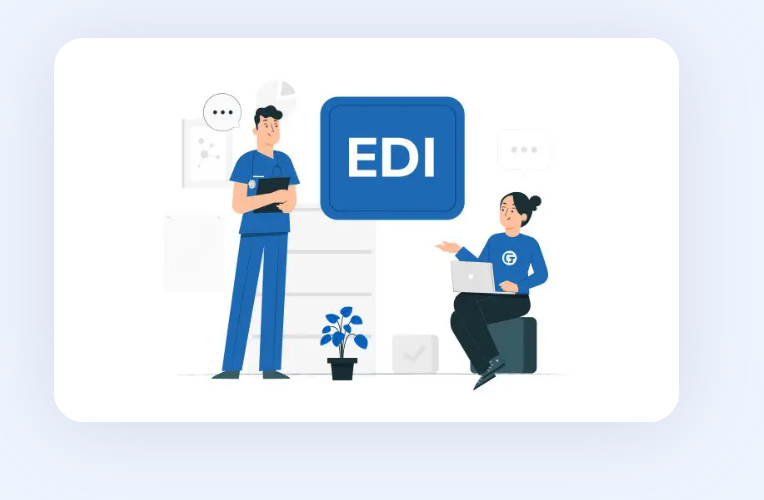In the fast-paced world of healthcare, efficiency and accuracy are paramount. Electronic Data Interchange (EDI) healthcare systems have emerged as a game-changer, streamlining processes, reducing errors, and improving overall patient care. Let's delve into the transformative power of EDI healthcare and how it's reshaping the industry landscape.
Understanding EDI Healthcare
Electronic Data Interchange (EDI) in healthcare refers to the electronic exchange of healthcare information between healthcare providers, payers, and other stakeholders. It involves the transfer of data in a structured format, eliminating the need for paper-based transactions. EDI encompasses various types of healthcare transactions, including claims processing, eligibility verification, and electronic remittance advice (ERA).
The Benefits of Implementing EDI in Healthcare
1. Enhanced Efficiency
By automating manual processes and eliminating paperwork, EDI healthcare systems significantly improve efficiency. Tasks that once took days can now be completed in a matter of minutes, allowing healthcare providers to focus more on patient care.
2. Reduced Errors
Manual data entry is prone to errors, which can have serious consequences in healthcare. EDI systems minimize the risk of errors by automating data exchange, ensuring accuracy in patient records, billing, and claims processing.
3. Faster Claim Processing
With EDI, healthcare providers can submit claims electronically, reducing processing times and accelerating reimbursement. This not only improves cash flow but also enhances overall revenue cycle management.
4. Improved Patient Experience
EDI healthcare systems facilitate seamless communication between providers and payers, leading to faster approvals and smoother transactions. This ultimately translates to a better experience for patients, who benefit from timely access to care and reduced administrative hassles.
5. Cost Savings
By streamlining processes and reducing errors, EDI healthcare systems generate significant cost savings for providers and payers alike. With fewer resources dedicated to manual tasks and paper-based processes, organizations can allocate resources more efficiently and focus on delivering high-quality care.
Key Challenges and Considerations
While the benefits of EDI healthcare are clear, implementation can pose challenges for organizations. Some key considerations include:
- Compliance: Ensuring compliance with healthcare regulations such as HIPAA is essential when implementing EDI systems to safeguard patient data and privacy.
- Interoperability: Achieving interoperability between different EDI systems and healthcare IT infrastructure is crucial for seamless data exchange across systems and organizations.
- Integration: Integrating EDI systems with existing electronic health record (EHR) systems and practice management software requires careful planning and coordination.
- Training: Providing comprehensive training to staff members is vital to maximize the benefits of EDI healthcare and ensure smooth adoption and utilization of the technology.
The Future of EDI Healthcare
As technology continues to advance and healthcare becomes increasingly digitized, the role of EDI in healthcare will only grow in importance. From leveraging artificial intelligence (AI) and machine learning to enhance predictive analytics to expanding interoperability standards, the future holds immense potential for further innovation and advancement in EDI healthcare.
Conclusion
EDI healthcare represents a significant advancement in the healthcare industry, offering unparalleled efficiency, accuracy, and cost savings. By embracing EDI systems, healthcare providers and payers can streamline operations, improve patient care, and stay ahead in an increasingly competitive landscape. As we look to the future, continued investment in EDI technology and collaboration across the healthcare ecosystem will be key to unlocking its full potential and driving meaningful change in the industry.
